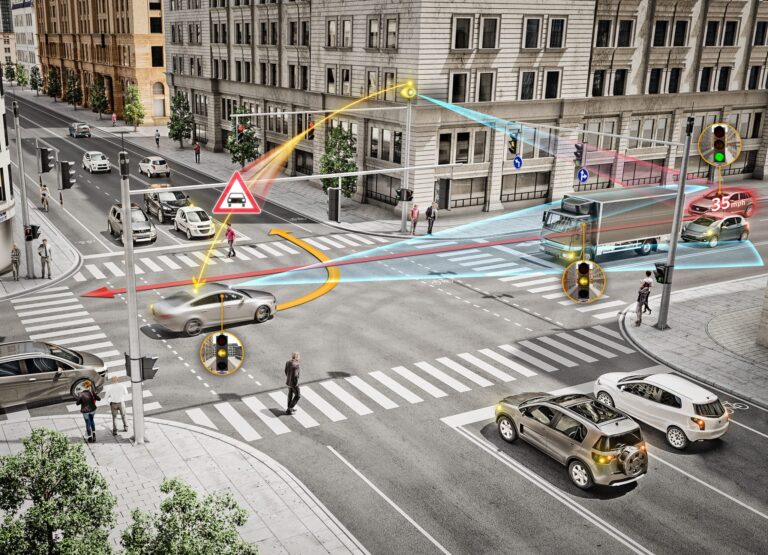Intersections and T-junctions are often prime spots for many traffic accidents, many of which are attributed to human error. Road accidents and fatalities can be attributed to road users misjudging a situation, a lack of attention, as well as occluded cars and vulnerable road users. Continental AG have developed the Continental Intelligent Intersection concept as a means of combating such occurrences, enabling increased intersection safety through the use of sensor-based object detection, fusion and broadcasts.
The solution includes the use of a set of sensors at an intersection, responsible for generating an environmental model, and the use of Dedicated Short-Range Communication (DSRC) units at the intersection and in the vehicle. The aim is to protect any vulnerable road users like cyclists and pedestrians, as well as providing drivers with support in complex intersection traffic scenarios. “Active monitoring of intersections provides the driver and/or intelligent vehicle system a very important time advantage to take action, even before a problem would have otherwise become visible”, says Bastian Zydek, Project Manager Intelligent Intersection.
Continental’s Intelligent Intersection technology had its first demonstration at Continental’s test centre in Brimley, Michigan last October 2017. Following this, the technology will make an appearance in the City of Columbus, Ohio where a broader pilot test will be implemented at an intersection. Jeremy McClain, Head of Systems & Technology Chassis & Safety, Continental North America, says: “We are proud to contribute our Intelligent Intersections technology to a highly innovative city like Columbus as our contribution to the US DOT’s Smart City Challenge.”
McClain explains that Continental’s “solution is based on transferring and adapting vehicle-proven hardware and software solutions to an infrastructure application. Cities will be able to deploy this technology to increase safety for their citizens and visitors alike. In the longer term the technology can also serve to improve inner-city traffic flow, thereby reducing travel time and vehicle emissions.”


